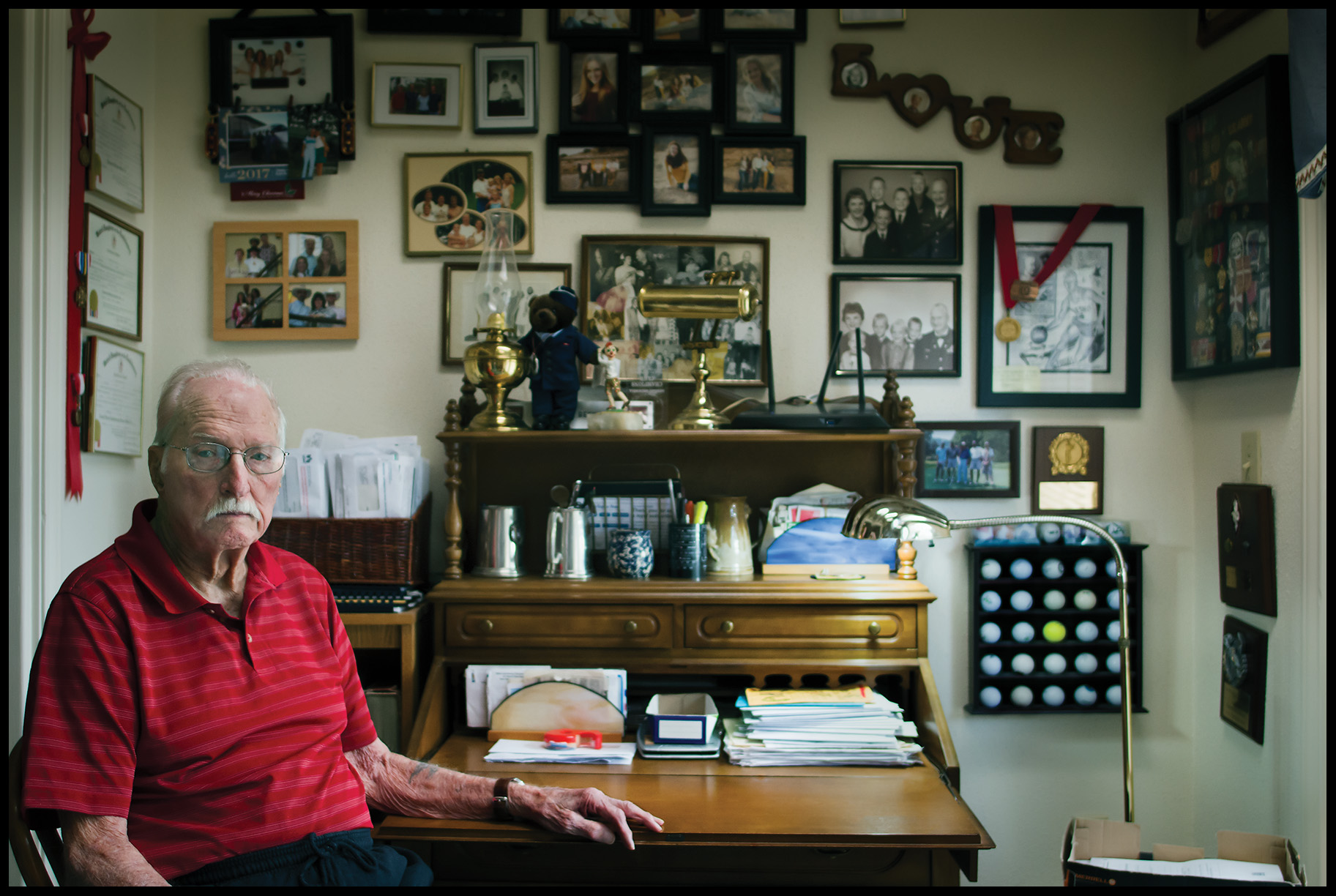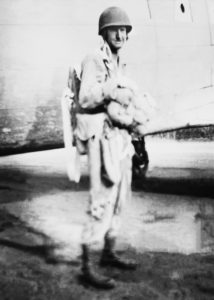
George Becknell
Paratroopers PTO
George Becknell
Colonel, U.S. Army
1943-1977

Pfc. George Becknell
New Guinea, 1944
The one thing I really remember about high school is when they interned my Japanese friends…. They couldn’t take anything with them except what they could carry. I never forgave our government or Roosevelt for doing that.
I was born in Santa Cruz, California in 1923. My father lost everything in the stock market crash; we really suffered. He went to work for the State of California in Hanford about 30 miles south of Fresno in the San Joaquin Valley. That’s where I spent most of my time.
The one thing I really remember about high school is when they interned my Japanese friends. I had a whole slew of Japanese buddies in high school and junior college. They had an internment camp about 20 miles from Hanford. They built those damned shacks and all of the Japanese people were sent there. They couldn’t take anything with them except what they could carry. I never forgave our government or Roosevelt for doing that. On the coast of California, they did have some Japanese with vegetable and fruit gardens shaped like arrows pointing to Army installations. Other than that, the Japanese were better Americans than a lot of them.
I was drafted into the Army in February, 1943 and sent to Camp Mackall, North Carolina—home of the 11th Airborne Division. The 11th Airborne was parachute and glider. I hated the gliders, so my buddy and I qualified after five jumps to become paratroopers. Most of the airborne divisions went to Europe, but General MacArthur wanted airborne capability in the South Pacific. We were ordered to San Francisco and got on a dang liberty ship; it was 20-some days to New Guinea and there wasn’t a day that was smooth. Everybody got seasick, even some of the sailors.
The Marines fought in the Philippines—Leyte and Luzon. We were on Leyte for a short time, then Luzon. We had a banzai attack at Luzon—I think the last of the war, because the Japanese already knew they had lost. This was 1945. That’s when I got hepatitis. I was in a hospital for about 10 days and found out that the division was going to Okinawa. I was able to rejoin my unit. The Japanese had surrendered and we went to Atsugi Air Base in Japan as occupation troops. That whole air base was surrounded by Japanese civilians. They didn’t let out a peep or yell or anything. We went to Sendai and Akita and every place we went, the arms and ammunition were set up by the Japanese people in one area and we collected it. I’m sure they hated us, but they knew they had lost the war and that was it.
I came home on the aircraft carrier Intrepid, which is now on display in New York. There were no planes on it. It was just transport from Japan to San Francisco. The captain of the ship and San Francisco politicians set a date and time for the aircraft carrier to come in under the Golden Gate Bridge. They had the bridge sealed off from traffic. That bridge was loaded with civilians and girls tossing bouquets and other things like undergarments onto the ship. I’ll never forget that. That was December, 1945.
I had gone to Visalia Junior College for a short time before I went into the service, so I enrolled and graduated in 1949 with a B.A. in Physical Education and minored in history. I was called back in the service in November, 1950 because of the Korean War. At Fort Ord I changed my MOS to physical activity specialist. In Vietnam, I was a medical service advisor at the military advisory group from 1962-63. That was before all hell broke loose. I stayed in the Army for almost 30 years and retired in 1977 as a colonel.
My best duty in the military was at Madigan Army Hospital when I was a physical reconditioning officer. My best day was when the nursing class from Fort Sam came to the officers’ club. Louise kind of struck my eye. During bingo she won five bucks and I said, ‘That’s the girl for me!’ That was it. {01-15-2018 • San Antonio, TX}